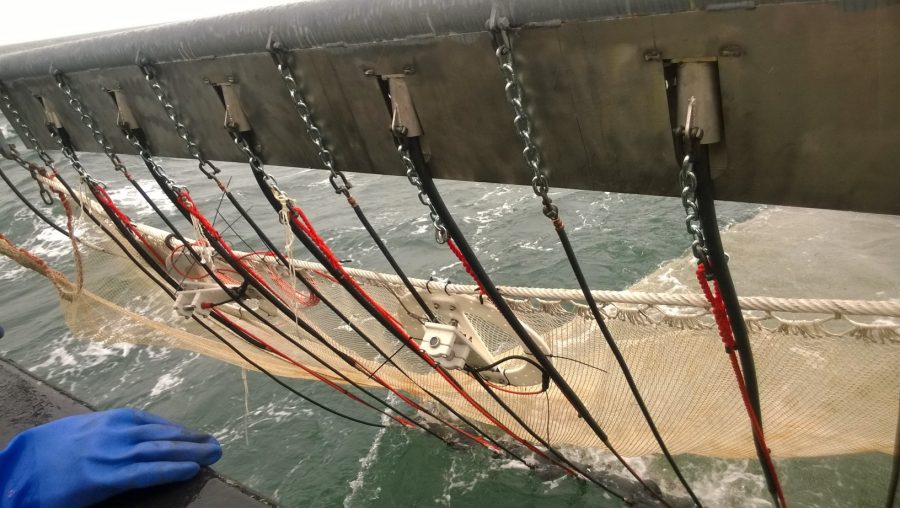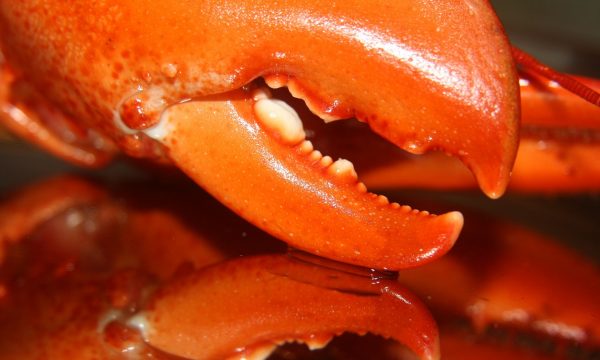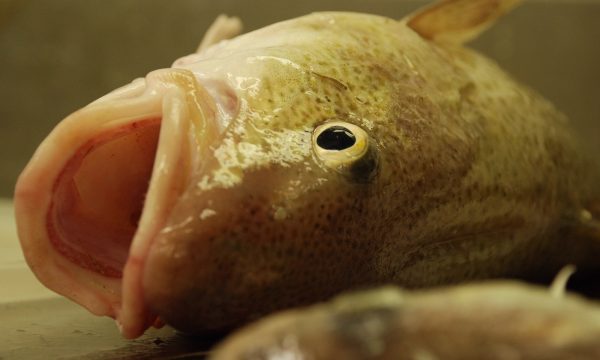Press release Side-effect study of shrimp pulse fishing yields reassuring results

The pulses (or minute electric stimuli) that are applied in shrimp pulse fishing do not cause any malformations in fish eggs and larvae. The eggs and larvae develop normally and in the experiments only a very small extra mortality was observed in the early life stages.
Impact of the pulse fishery
There is a certain amount of reservation in society regarding "electric" fishing. There are also stories circulating about an alleged biological impact on certain marine species. An ILVO/UGent PhD therefore went in search of confirmation/denial of the possible negative side effects, with an extensive series of experiments.
In addition to the effects on the first life stages of fish, PhD student Marieke Desender also investigated whether the small electric pulses could affect the prey-seeking of ray and shark species with their typical electrosensitive organ. "The tested dogfish did not appear to experience any effect from the pulses during their foraging behavior."
Previous repeated scientific research showed significant sustainability benefits of shrimp fishing with electric pulse, in terms of discards, bottom disturbance and fuel consumption. Much more selective fishing for target species (resulting in less unwanted bycatch) can be achieved. The trawls can skim the seabed instead of 'plowing' through it. The reduced fuel consumption is good for CO2 emissions and for the fisherman's wallet. "The new research results open up prospects for pulse fishing as a technique for shrimp fishermen," according to ILVO.
"Wild story" related to eggs and larvae of sole and cod?
The hypothesis was that the shrimp pulse could threaten the accretion of fish stocks, through damage or additional mortality of the eggs, larvae or juveniles. Shrimp fishing occurs in shallow coastal waters. The so-called early life stages of sole and cod, among others, are suspended in the water column of the same waters. In experiments, Marieke Desender thus exposed different larval stages (7 growth stages for cod, and 2 growth stages for sole) to 5 pulses per second for 5 seconds each. "Such a field strength, duration, frequency and amplitude is the maximum or even an overestimate of what can be experienced in the sea when the pulse gear passes, i.e. only close to the electrode (the cable that sends out the pulses) and when sailing very slowly." No deformities were observed and no difference in survival could be measured between the control groups and those exposed to the small electric pulses. Only the youngest stages of cod larvae (2 and 26 days old) showed a difference in mortality of 12% and 16%, respectively, compared to normal losses at that life stage. At the intermediate stage, the 11-day-old larvae, there was no influence. "In the wild, less than 1% of all fish eggs eventually grow into adult fish. So there is very high dropout rate in all early life stages combined anyway. There is very little chance that the observed extra mortality in 2 of 7 larval stages could have an effect on the overall population renewal of cod if one were to start shrimp pulse fishing. The likelikood is further reduced because only a minute percentage of eggs, larvae and juveniles hover in the bottom zone on a strip where the trawl pulse net activates its wake field." Further studies of long-term effects on population renewal are planned.
"Wild story" related to food seeking organ of shark species?
Dogfish, and sharks in general, have electro-sensitive organs for hunting. Through these organs, the animals detect electric fields generated by, among other things, the breathing or the heartbeat of their live prey. The hypothesis was that the conscious search organs could be disrupted if the sharks foraged near working shrimp boats.
"That too is not the case, our research shows. In our tests, pulses of varying strength (both from the shrimp and flatfish pulse gear) were used. In each case, we found that the time between the start of the dogfish's search behavior until the effective bite (to a simulated electric field of a prey) was not affected by exposure to fishing pulses present" says researcher Desender. Thus, no correlation can be found between the sharks' mode of foraging and whether or not pulses are sent out. The prey detection of sharks is not affected by a pulse fishing gear.
Conclusion: Yes or no to pulse fishing?
Marine scientist Hans Polet (ILVO) has been working on the topic of pulse fishing for 20 years. "The results of this PhD were eagerly awaited. This is good news for a technique about which, on the basis of considerable and strongly documented ecological benefits, we dare to speak favorably." Recently, the European Parliament spoke out against all forms of pulse fishing. In the trilateral consultations with the Commission and the Council of Ministers the dossier is now on the agenda. The political position in favor of a ban is probably related to the wrath of the English, Belgian and especially French fishermen who felt increased fishing pressure in the Southern North Sea because of the 75 Dutch pulse vessels that fished for sole. On the initiative of their government, they switched to pulse fishing on a (too) large scale, in the form of a 'scientific experiment'. The result was a competitive advantage for the Dutch, at the expense of traditional fishing techniques. According to Polet, shrimp and sole pulse fishing should be assessed separately. "We aim for a nuanced picture. In our opinion, shrimp pulse fishery is on point. With sole pulse fishing, a little more (smaller scale!) impact research is still needed. But the ecological benefits make it interesting enough to plot a path to implementation. Regulated, controlled and scientifically guided."
Read the full study: Impact of Pulsed Direct Current on Embryos, Larvae and Young Juveniles Atlantic cod and its Implication of Electrotrawling for Brown Shrimp


